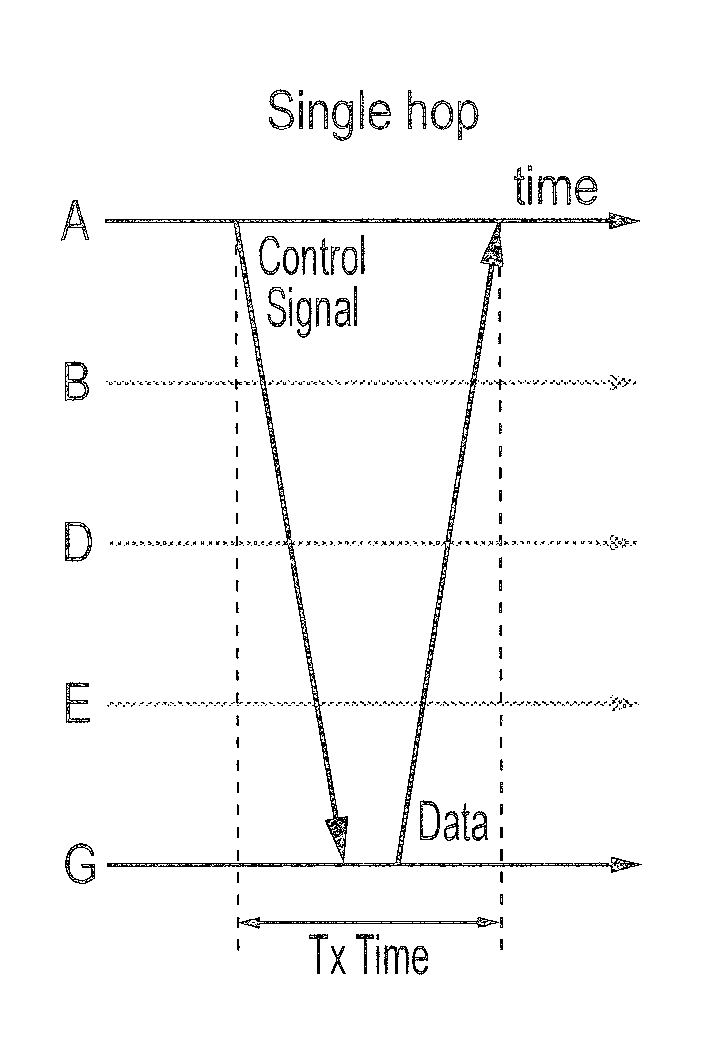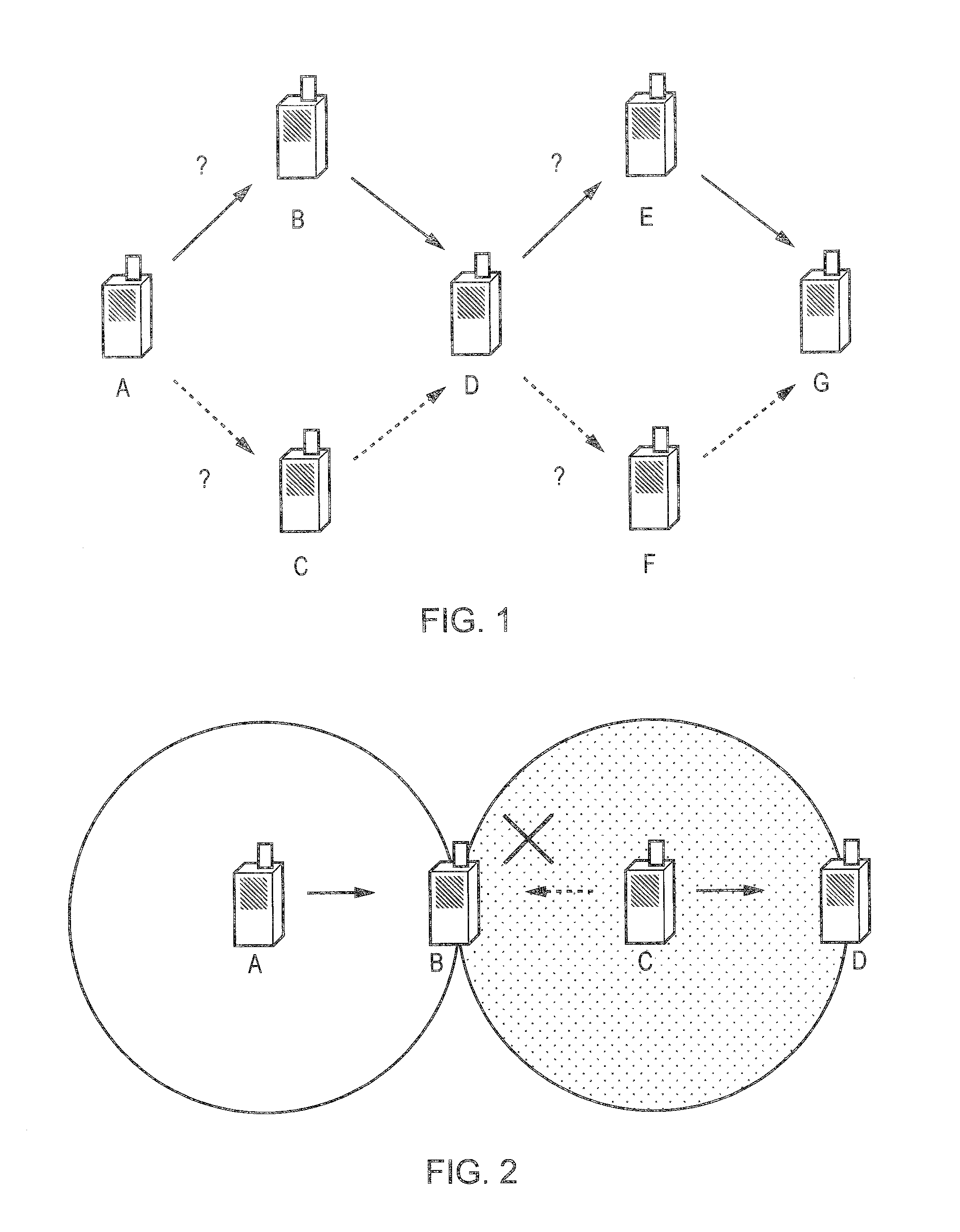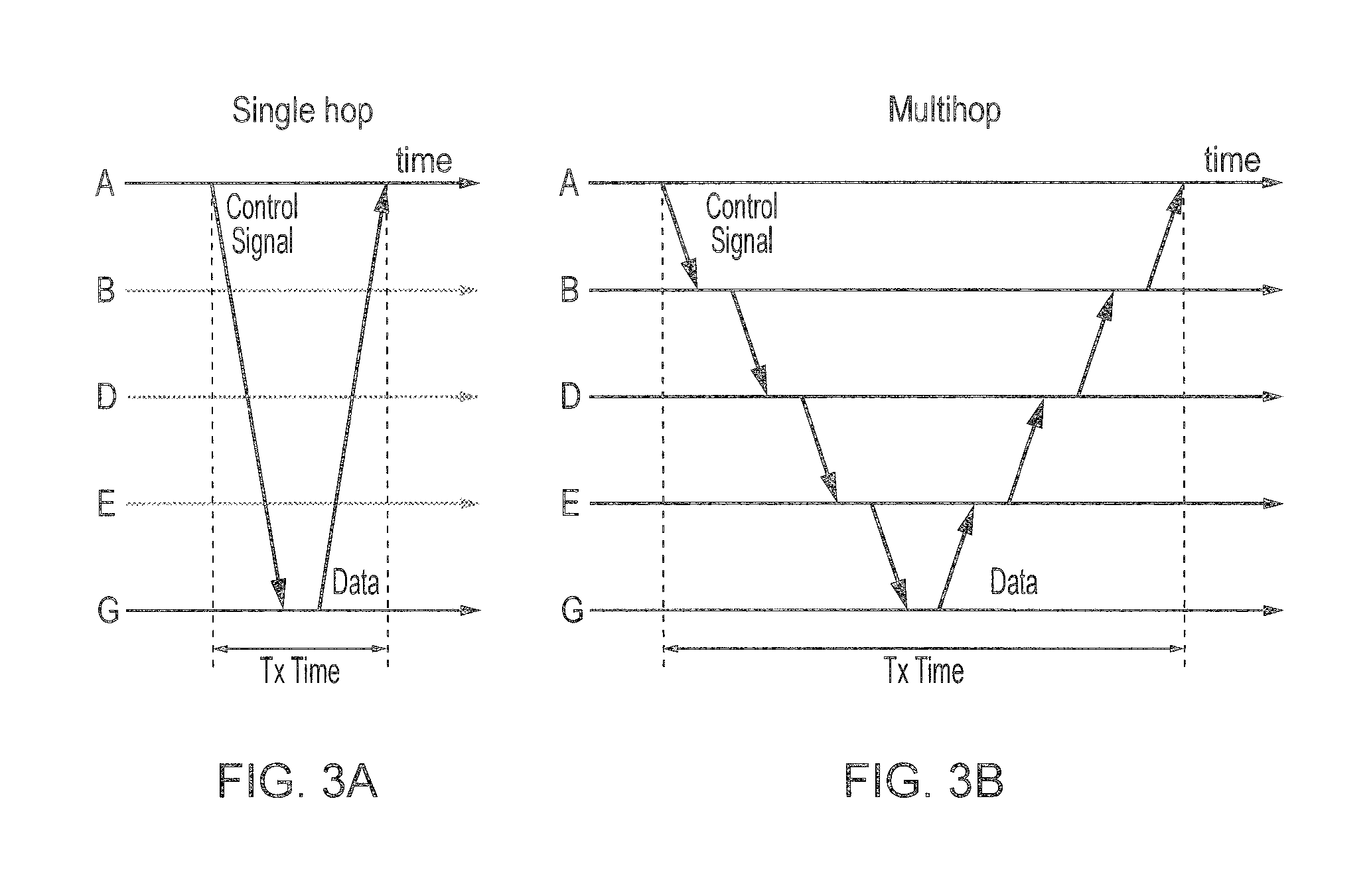Wireless communications system and method
a communication system and wireless technology, applied in the field of wireless communications system and method, can solve the problems of increased latency, increased side effects, and increased
- Summary
- Abstract
- Description
- Claims
- Application Information
AI Technical Summary
Benefits of technology
Problems solved by technology
Method used
Image
Examples
Embodiment Construction
[0089]Referring first to FIGS. 4A and 4B, these provide a comparison between a symmetric uplink / downlink multi-hop signalling scenario and an asymmetric uplink / downlink signalling scenario. FIG. 4A illustrates a symmetric uplink / downlink case in which communications are multi-hopped both on a downlink 5a from a base station 1a to a terminal device 4a via intermediate devices 2a and 3a, and also on an uplink 6a from the terminal device 4a to the base station la via the intermediate devices 2a and 3a. FIG. 4B illustrates an asymmetric uplink / downlink case in which communications are direct on a downlink 5b from a base station 1b to a terminal device 4b, but are multi-hopped on an uplink 6b from the terminal device 4b to the base station 1b via intermediate devices 2b and 3b.
[0090]Referring now to FIGS. 5A and 5B, the impact of the asymmetric uplink / downlink scenario on the resource consumption and transmission time / medium time (time during which a radio link is in use conveying signa...
PUM
 Login to View More
Login to View More Abstract
Description
Claims
Application Information
 Login to View More
Login to View More - R&D
- Intellectual Property
- Life Sciences
- Materials
- Tech Scout
- Unparalleled Data Quality
- Higher Quality Content
- 60% Fewer Hallucinations
Browse by: Latest US Patents, China's latest patents, Technical Efficacy Thesaurus, Application Domain, Technology Topic, Popular Technical Reports.
© 2025 PatSnap. All rights reserved.Legal|Privacy policy|Modern Slavery Act Transparency Statement|Sitemap|About US| Contact US: help@patsnap.com



